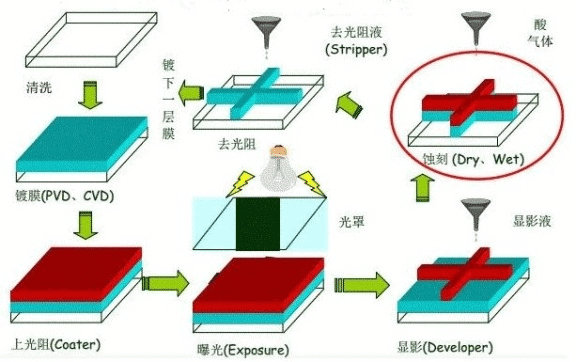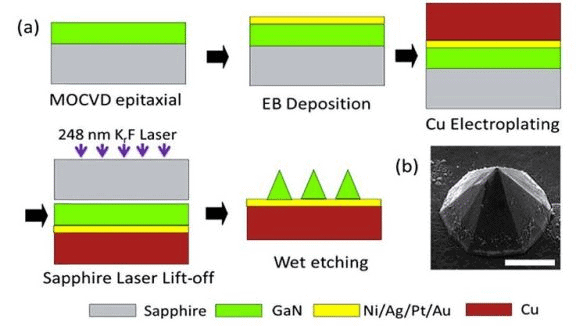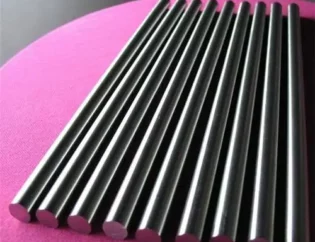Etching is a technology that uses chemical strong acid corrosion, mechanical polishing or electrochemical electrolysis to treat the surface of objects. In addition to enhancing aesthetics, it also increases the added value of objects. From traditional metal processing to high-tech semiconductor manufacturing, they are all within the scope of application of etching technology.

Metal etching is a technology to remove metal materials through chemical reaction or physical impact. Metal etching technology can be divided into wet etching and dry etching. Metal etching consists of a series of chemical processes. Different etchants have different corrosion characteristics and strength for different metal materials.
Metal etching, also known as photochemical etching, refers to the removal of the protective film of the metal etching area after exposure, plate making, development and contact with the chemical solution in the process of metal etching, so as to achieve dissolution corrosion, formation of bumps, or hollowing out. It was first used to manufacture printed concave convex plates such as copper plate and zinc plate. It is widely used to reduce the weight of instrument panel or process thin workpieces such as nameplate. Through the continuous improvement of technology and process equipment, etching technology has been applied to aviation, machinery, chemical industry and semiconductor manufacturing processes for the processing of precision metal etching products of electronic thin parts.
Types of etching technology
Wet etching:![What is metal etching? 3 What is metal etching? 3]()
Wet etching is to immerse the wafer into a suitable chemical solution or spray the chemical solution onto the wafer for quenching, and remove the atoms on the surface of the film through the chemical reaction between the solution and the etched object, so as to achieve the purpose of etching During wet etching, the reactants in the solution first diffuse through the stagnant boundary layer, and then reach the wafer surface to produce various products through chemical reactions. The products of etching chemical reaction are liquid or gas phase products, which are then diffused through the boundary layer and dissolved in the main solution. Wet etching will not only etch in the vertical direction, but also have the effect of horizontal etching.
Dry etching:![What is metal etching? 4 What is metal etching? 4]()
Dry etching is usually one of plasma etching or chemical etching. Due to different etching effects, the physical atoms of ions in the plasma, the chemical reaction of active free radicals and the surface atoms of devices (wafers), or the combination of the two, include the following contents:
physical etching: sputtering etching, ion beam etching
chemical etching: plasma etching
physicochemical composite etching: reactive ion etching (RIE)
Dry etching is a kind of anisotropic etching, which has good directivity, but the selectivity is worse than wet etching. In plasma etching, plasma is a partially dissociated gas, and gas molecules are dissociated into electrons, ions and other substances with high chemical activity. The biggest advantage of dry etching is “anisotropic etching”. However, the selectivity of dry etching is lower than that of wet etching. This is because the etching mechanism of dry etching is physical interaction; Therefore, the impact of ions can remove not only the etching film, but also the photoresist mask.

Etching process
According to the type of metal, the etching process will be different, but the general etching process is as follows: metal etching plate → cleaning and degreasing → water washing → drying → film coating or silk screen printing ink → drying → exposure drawing → development → water washing and drying → etching → film stripping → drying → inspection → finished product packaging.
1. Cleaning process before metal etching:
The process before etching stainless steel or other metals is cleaning treatment, which is mainly used to remove dirt, dust, oil stains, etc. on the material surface. The cleaning process is the key to ensure that the subsequent film or screen printing ink has good adhesion to the metal surface. Therefore, the oil stain and oxide film on the metal etching surface must be completely removed. Degreasing shall be determined according to the oil stain of the workpiece. It is best to degrease the silk screen printing ink before electric degreasing to ensure the degreasing effect. In addition to the oxide film, the best etching solution shall be selected according to the type of metal and film thickness to ensure surface cleanliness. It must be dry before screen printing. If there is moisture.
2. Paste dry film or silk screen photosensitive adhesive layer:
According to the actual product material, thickness and the exact width of the figure, it is determined to use dry film or wet film silk screen printing. For products with different thicknesses, factors such as the etching processing time required for product graphics should be considered when applying the photosensitive layer. It can make a thicker or thinner photosensitive adhesive layer with good coverage performance and high definition of patterns produced by metal etching.
3. Drying:
After the completion of film or roll screen printing ink, the photosensitive adhesive layer needs to be thoroughly dried to prepare for the exposure process. At the same time, ensure that the surface is clean and free of adhesion, impurities, etc.
4. Exposure:
This process is an important process of metal etching, and the exposure energy will be considered according to the thickness and accuracy of the product material. This is also the embodiment of the technical ability of etching enterprises. The exposure process determines whether the etching can ensure better dimensional control accuracy and other requirements.
5. Development:
After the photosensitive adhesive layer on the surface of the metal etching plate is exposed, the pattern adhesive layer is cured after exposure. Then, the unwanted part of the pattern, that is, the part that needs corrosion, is exposed. The development process also determines whether the final size of the product can meet the requirements. This process will completely remove the unnecessary photosensitive adhesive layer on the product.

6. Etching or etching process:
After the product prefabrication process is completed, the chemical solution will be etched. This process determines whether the final product is qualified. This process involves etching solution concentration, temperature, pressure, speed and other parameters. The quality of the product needs to be determined by these parameters.
7. Removal:
The surface of the etched product is still covered with a layer of photosensitive adhesive, and the photosensitive adhesive layer on the surface of the etched product needs to be removed. Because the photosensitive adhesive layer is acidic, it is mostly expanded by acid-base neutralization method. After overflow cleaning and ultrasonic cleaning, remove the photosensitive adhesive layer on the surface to prevent photosensitive adhesive residue.
8. Test:
After the film is taken, the following is testing, packaging, and the final product is confirmed whether it meets its specifications.
Precautions in etching process
reduce side corrosion and protruding edges and improve metal etching processing coefficient: generally, the longer the printed board is in the metal etching solution, the more serious the side etching is. Undercutting seriously affects the accuracy of printed wire, and serious undercutting will not make thin wire. When the undercut and edge decrease, the etching coefficient increases. The high etching coefficient indicates that the thin line can be maintained and the etched line is close to the size of the original image. Whether the plating resist is tin lead alloy, tin, tin nickel alloy or nickel, the excessively protruding edge will lead to short circuit of the conductor. Because the protruding edge is easy to break, an electric bridge is formed between two points of the conductor.
improve the consistency of etching processing rate between plates: in continuous plate etching, the more consistent the metal etching processing rate, the more uniform etching plate can be obtained. In order to maintain the best etching state in the pre etching process, it is necessary to select an etching solution that is easy to regenerate and compensate and easy to control the etching rate. Select technologies and equipment that can provide constant operating conditions and automatically control various solution parameters. It can be realized by controlling the amount of copper dissolved, pH value, solution concentration, temperature, uniformity of solution flow, etc.
improve the uniformity of the metal etching processing speed of the whole plate surface: the etching uniformity of the upper and lower sides of the plate and each part of the plate surface is determined by the uniformity of the flow rate of the metal etching solution on the plate surface. In the etching process, the etching rates of the upper and lower plates are often inconsistent. The etching rate of the lower plate surface is higher than that of the upper plate surface. Due to the accumulation of solution on the surface of the upper plate, the etching reaction is weakened. The uneven etching of the upper and lower plates can be solved by adjusting the injection pressure of the upper and lower nozzles. The spray system and the oscillating nozzles can further improve the uniformity of the whole surface by making the spray pressure of the center and edge of the plate different.
Advantages of etching process
Because the metal etching process is etched by chemical solution.
maintain high consistency with raw materials. It does not change the properties, stress, hardness, tensile strength, yield strength and ductility of the material. The base processing process is etched in the equipment in an atomized state, and there is no obvious pressure on the surface.
no burrs. In the process of product processing, there is no pressing force in the whole process, and there will be no crimping, bumping and pressing points.
it can cooperate with the post process stamping to complete the personalized molding action of the product. The hanging point method can be used for full plate electroplating, bonding, electrophoresis, blackening, etc., which is more cost-effective.
it can also cope with miniaturization and diversification, short cycle and low cost.
Application field of etching processing
consumer electronics
filtration and separation technology
Aerospace
medical equipment
precision machinery
car
high end crafts








